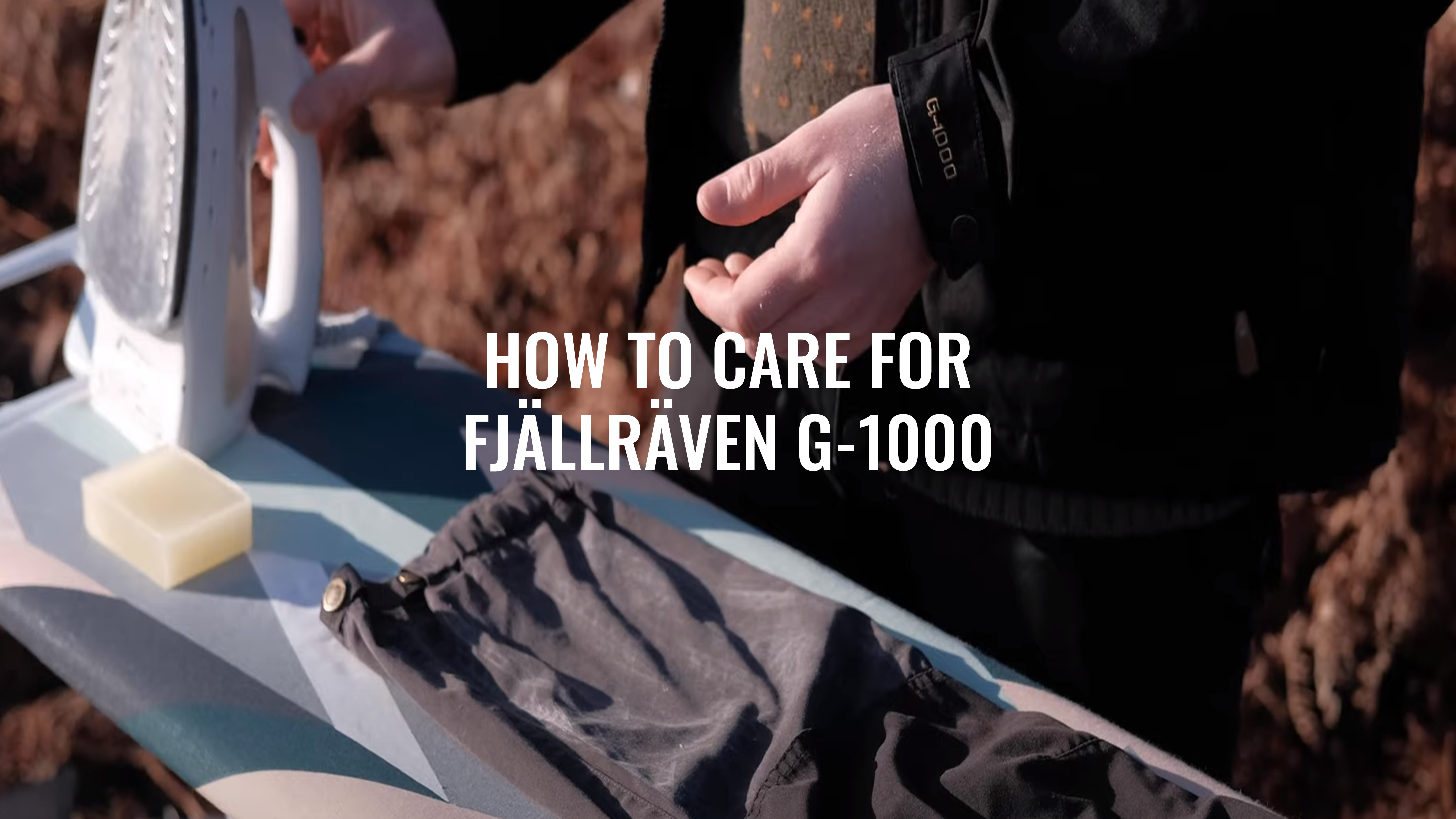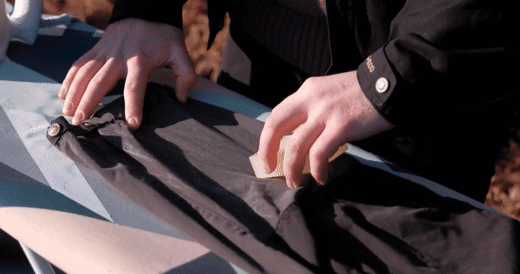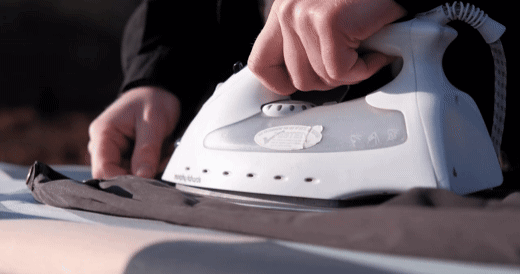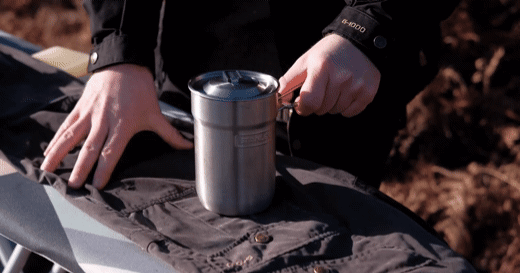 Remember that time I hiked up Mount Drizzle (okay, not its real name, but you get the idea) and got caught in unexpected rainfall? If my trusty Fjällräven G-1000 jacket hadn’t been properly waxed, I’d have been a walking, talking puddle! This brings us to the superstar of outdoor fabrics: G-1000. Loved by trekkers and urban adventurers alike, G-1000 jackets are a staple in outdoor gear. But like any good relationship, it’s all about the care you put in. Let’s dive into how to care for Fjällräven G-1000 and keep it in top shape for years to come.
Remember that time I hiked up Mount Drizzle (okay, not its real name, but you get the idea) and got caught in unexpected rainfall? If my trusty Fjällräven G-1000 jacket hadn’t been properly waxed, I’d have been a walking, talking puddle! This brings us to the superstar of outdoor fabrics: G-1000. Loved by trekkers and urban adventurers alike, G-1000 jackets are a staple in outdoor gear. But like any good relationship, it’s all about the care you put in. Let’s dive into how to care for Fjällräven G-1000 and keep it in top shape for years to come.
How to care for Fjällräven G-1000: Exploring the Fabric
Did you know the G-1000 fabric is always ready for an adventure, rain or shine? G-1000 was introduced by Fjällräven in the groovy year of 1968, this fabric has been the real MVP in the outdoor apparel game. Why? Well, it’s not just any material – it’s a blend of 65% polyester and 35% cotton that can practically withstand a bear hug (don’t try this, please).
Discovering the Various Versions of G-1000
The G-1000 is a versatile fabric that has been developed for different uses and environments. For instance, G-1000 Air Stretch is a high-quality mechanical stretch fabric that is perfect for garments that need to be light and airy, allowing for unrestricted movement. On the other hand, G-1000 Air is a lightweight material with a looser weave that was developed for warm climate trekking. If you’re looking for a fabric that makes less noise when you’re moving around, G-1000 Silent is the way to go. For those who prioritize durability, G-1000 Heavy Duty takes it to a new level, although it’s less ventilating. Finally, G-1000 Lite is a sturdy yet lightweight material with rip-stop threads that enhance its resistance. If you’re looking for a durable and stylish jacket that can withstand any weather condition, I highly recommend checking out the Fjällräven jacket range.
Durability & Timeless charm
G-1000 is very versatile; whether you’re braving a desert storm or a snow blizzard, this fabric’s got your back, literally. It’s so adaptable you’ll start thinking it has a mood ring woven into its fibres. And the best part? With a touch of care, your G-1000 jacket becomes more than just a piece of clothing; it’s like a reliable friend accompanying you on every adventure. This jacket isn’t just durable; it ages gracefully, becoming more comfortable and characterful over time – a bit like fine wine, but more practical for those scenic hikes and treks.
How to care for Fjällräven G-1000: Cleaning and Washing
Quick Spot Clean: Erasing Miniature Memories
Identify the Spot: Whether it’s a dab of mud or a splash of your morning coffee, every adventure leaves its mark.
Gentle Approach: Use a soft brush or a clean, damp cloth. Avoid scrubbing too hard, as this can damage the fabric’s surface.
Cold Water Magic: Spot clean with cold water. Hot water can set the stain deeper into the fabric.
Mild Soap Solution: For stubborn stains, use a small amount of mild soap. Remember, a little goes a long way.
Extra notes:
G-1000 can be machine washed at 40°C (30°C for environmental kindness), but remember that Greenland Wax washes out after a few cycles. Wash only when necessary and pay close attention to care labels, especially for items with mixed fabrics or special padding.
Greenland Wax with G-1000 Fabric:
Greenland Wax, a unique blend of beeswax and paraffin, is not just a wax; it’s an enhancer for your G-1000 jacket. While G-1000 fabric is already tough and wind-resistant thanks to its tight weave, adding Greenland Wax takes its capabilities up a notch. It’s like turning a rugged warrior into an armored knight, ready to brave more extreme elements.
How to care for Fjällräven G-1000: Wax On, Wax Off
Wax On for Extra Armor: By applying Greenland Wax, you boost the wind resistance, amplify the durability, and add a layer of water resistance to the fabric. This is especially handy for areas like the knees, rear, and lower parts of trousers, or the hood and back hem of jackets which face the brunt of the weather.
Wax Off for Breathability: When you’re out in warmer, sunnier conditions and need more airflow, you can simply wash out the wax. Just machine wash your garment at 30°C two or three times, and voilà, your jacket is now lighter and airier.
Step-by-Step Wax Application:
Apply the Wax: Use the Greenland Wax block to rub a thin, even layer onto the fabric. Apply firm, smooth strokes, ensuring you cover the areas that require extra protection.

Melt the Wax: Use a hairdryer or an iron (on a low to moderate setting) to melt the wax into the fabric. Keep the iron at around 55°C to 60°C (131-140°F). Ensure the wax doesn’t get too runny and wipe the iron afterward.


Layer for More Protection: For enhanced water resistance, repeat the waxing process several times on exposed sections like the hood and shoulders. Thin, multiple layers work better than a single thick layer.
Special Considerations:
Waxing on the Go: You can use a hot water bottle or the flame of a camp stove as an improvised tool for melting the wax while out in the field. Just be cautious of the distance and heat to avoid fabric damage.


Dealing with Padded or Lined Garments: For items with down or synthetic padding, or those with a Hydratic lining, use a hairdryer rather than an iron to avoid damaging the lining or filling.
Reactivating Existing Wax:
Sometimes, you might just need to reactivate the Greenland Wax that’s already in the fabric. This can be done by simply warming the jacket with a hairdryer or iron on a low heat. The heat will draw out the existing wax, revitalizing its protective qualities.
Wax Application Limitations:
G-1000 Specific: Remember, only G-1000 material can be waxed. If your garment combines G-1000 with other materials, like in the Keb Jacket and Trousers, be careful to apply wax only on the G-1000 areas.
By following these steps, you can tailor your G-1000 jacket’s performance to suit your environment, whether you’re braving the wild winds or basking in the warm sun. Greenland Wax is not just a protective layer; it’s an adaptable tool that shapes your jacket to your adventures. We highly recommend watching the movie created by Ben from Trekitt on waxing methods. Ben shares his expertise the best techniques for applying wax on G-1000 garments, and how to ensure that your gear is properly protected.
Repairing Small Damage on Your G-1000 Jacket: Keeping the Adventure Alive
Addressing the Inevitable: Minor Wear and Tear
Even the sturdiest of outdoor gear, like your trusty G-1000 jacket, might face the occasional snag or tear. It’s all part of the journey! Here’s how you can mend small damages to keep your jacket in top shape for many more adventures.
How to care for Fjällräven G-1000: Fixing Minor Rips and Tears
Assess the Damage:
Small rips or tears less than an inch can be easily repaired. For larger damages, you might need professional help.
Clean the Area:
Before you start the repair, ensure the damaged area is clean and dry.
Use a Repair Kit:
Fjällräven offers specialized repair kits for G-1000 clothing. These kits typically include fabric patches and sewing materials that match your jacket’s fabric.
Patch It Up:
Cut a patch slightly larger than the tear. Round the edges of the patch to prevent peeling. Place it over the tear and sew it in place using a fine needle and durable thread. If sewing isn’t your forte, fabric glue can be a quick alternative, though sewing is more durable.
Re-Wax the Repaired Area
If you’ve used a patch, don’t forget to re-apply Greenland Wax to ensure consistent water resistance and durability in the repaired spot.
Dealing with Loose Threads:
Snip, Don’t Pull: If you notice a loose thread, resist the urge to pull it. Simply snip it off close to the fabric to prevent further unravelling.
Secure Ends if Needed: If the thread end is from a critical seam, you might want to secure it with a tiny stitch or a dot of fabric glue to prevent future issues.
The Role of Fjällräven Repair Kits:
Fjällräven’s repair kits are specifically designed for G-1000 fabric, ensuring that your repairs are as close to the original quality as possible.
These kits are handy for on-the-go repairs, making them a valuable addition to your outdoor gear.
In addition to patches and thread, the kits often include instructions, making the repair process straightforward even for those not skilled in sewing.
How to care for Fjällräven G-1000: Professional Repairs
For significant damage, or if you’re unsure about your DIY repair skills, it’s wise to seek professional repair services. Fjällräven offers repair services, ensuring that your jacket is restored to its full functionality with the right materials and techniques.
By taking care of minor damages promptly, you not only extend the life of your G-1000 jacket but also maintain its performance and appearance. Remember, each repair adds to the story of your adventures, making your jacket uniquely yours.
How to care for Fjällräven G-1000: Storage
Why Proper Storage Matters:
Storing your G-1000 jacket correctly is crucial for maintaining its shape, function, and longevity. Just like any quality gear, how you store it when not in use can significantly impact its performance for your next adventure.
Guidelines for Ideal Storage:
Clean Before Storing:
Always store your jacket clean. Dirt, oils, and other residues can degrade the fabric over time.
Dry Thoroughly:
Ensure your jacket is completely dry. Storing it damp can lead to mildew, which not only smells bad but can also damage the material.
Use Hangers:
Hang your G-1000 jacket on a sturdy hanger to maintain its shape. Avoid wire hangers which can distort the shape or leave rust marks. Wide, padded hangers are ideal as they support the jacket well, particularly in the shoulder area.
Opt for Breathable Garment Bags:
If you choose to cover your jacket, use a breathable garment bag. This protects the jacket from dust while allowing air circulation, preventing any musty smells and fabric deterioration.
Avoid Plastic Bags:
Never store your jacket in a plastic bag. Plastic can trap moisture and prevent air circulation, leading to potential mold and fabric damage.
Cool, Dry Place:
Store your jacket in a cool, dry place away from direct sunlight. Excessive heat can melt the wax, and sunlight can fade the colors and weaken the fabric.
Avoid Compression:
Don’t store your jacket compressed in a bag or under heavy items. Compression for extended periods can damage the fabric and affect the jacket’s insulation and shape.
How to care for Fjällräven G-1000: Seasonal Considerations
End of Season Check: At the end of a season, give your jacket a once-over. Check for any needed repairs, re-wax if necessary, and ensure it’s clean and dry before storing.
Re-Wax Before Storage: If it’s time for a wax refresh, doing it before storage ensures your jacket is ready for action when you next need it.
For Long-Term Storage:
Periodic Checks: If you’re storing your jacket for an extended period, it’s a good idea to periodically check on it, give it an air-out, and ensure it’s not picking up any unwanted moisture or smells.
Properly storing your G-1000 jacket not only keeps it in prime condition but also ensures that it’s ready at a moment’s notice for your next outdoor adventure. Think of it as tucking in your jacket for a well-deserved rest, dreaming of future escapades.
Q&A
How Durable is G-1000?
The G-1000 is renowned for its durability. Its unique blend of polyester and cotton, often infused with Greenland Wax, enhances its resistance to wear and tear. This makes it a reliable companion for outdoor adventures.
Will G-1000 Fabric Jacket Keep Me Dry?
Yes, to a large extent. The G-1000 fabric, especially when waxed, offers good water resistance. It’s not fully waterproof like some specialized materials, but it does a commendable job in light to moderate rain.
Can You Tumble-Dry G-1000?
It’s not recommended. Tumble drying can harm the fabric and reduce its water-resistant properties. Instead, air dry your G-1000 jacket to maintain its quality and longevity.
Does G-1000 Fabric Shrink?
G-1000 fabric has minimal shrinkage. However, to prevent it, avoid high-heat washing and drying methods. Stick to cold or lukewarm water and air drying.
How Long Does a G-1000 Jacket Last?
With proper care, a G-1000 jacket can last for several years, even with frequent use. Its robust fabric and the ability to re-wax make it a long-lasting outerwear choice.
Does Fjallraven G1000 Wax Ruin Irons?
There’s a risk. When applying Greenland Wax, use an iron set to a low or medium temperature. It’s best to use an old iron or a protective cloth between the iron and the wax to avoid any residue buildup on your iron.
Tackling G-1000 Fabric Hiccups: Quick Fixes for Common Issues
Even the sturdiest materials face their set of challenges. From fading colors under the relentless sun to losing its famed water resistance after numerous escapades, the G-1000 fabric, like any high-performance gear, requires a bit of know-how and TLC to keep it in prime condition.Whether it’s waxing woes or color care, we’ve got you covered for a hassle-free outdoor experience.
Common G-1000 issues:
I bought the Fjällräven Greenland Wax and followed the instructions to impregnate it. Something must have gone wrong since my jacket now has patches of wax all over (the dark spots)
Issue: Uneven Wax Distribution
Solution: Use a hairdryer to gently heat the waxed areas and smooth out with a cloth for an even finish.
Issue: Fading Color
Solution: Reapply Greenland Wax to refresh the color and improve fabric durability.
Issue: Loss of Water Resistance
Solution: Re-wax the jacket, evenly distributing the wax with a hairdryer or iron on low heat.
Issue: Stiffness After Waxing
Solution: Regular use will naturally soften and evenly distribute the wax over time.
Issue: Dirt and Stain Accumulation
Solution: Spot clean with a damp cloth and mild detergent, then rinse with lukewarm water.
Issue: Shrinking After Washing
Solution: Wash in cold or lukewarm water and air dry. Avoid using a tumble dryer to prevent shrinkage.
Contact Us
As usual, if you have any questions, please get in touch! You can reach out to us on our social media channels, whether it’s Facebook or Instagram, via email at [email protected] You can also call our friendly customer service team on 01432 263 335. If you’re local to Hereford, why not visit us in-store? You can speak to one of our lovely staff members in person and get some hands-on assistance.
Written by Zuzanna Kurtys

Leave a Reply